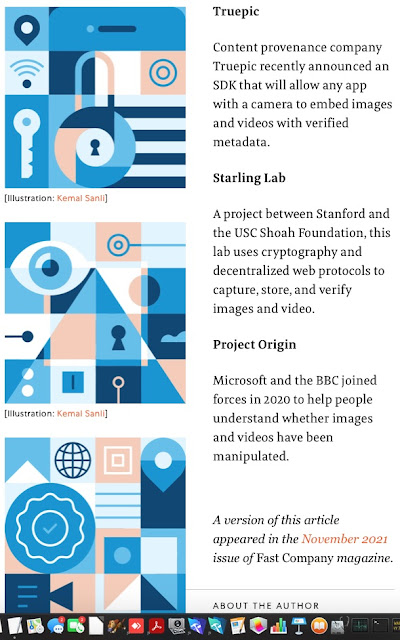Halloween never disapoints. Enjoy.
Sunday, October 31, 2021
It's all about the money/rev XXX
It's all about the money. This time, McKinsey and their blue chip polluter clientele.
Saturday, October 30, 2021
Off by almost 20 years
[Source Photo: svengine/iStock]
Exxon knew about global warming back in 1977, a fact known by many but what isn't known is the fact big oil knew about the relationship of fossil fuel burning and the greenhouse effect almost 20 years earlier.
We were betrayed.
Factoid ... 1977 was the actual date regarding Exxon.
Friday, October 29, 2021
Wednesday, October 27, 2021
Deepfakes et al ...
Deep fakes are everywhere. Just go to any site and see nonsense, usually on the right hand side of a site page or on the bottom, purporting to say something ridiculous regarding some celebrity, news event or "scientific" fact along with a doctored graphic showing said tidbit to be "true" One of the usuals is a huge beast found on a beach near you. Seems Adobe and significant others, using metadata as the weapon of choice, is enabling us rubes to put out stuff that's legit without question.
However, deepfake code's everywhere, even in Adobe.
But what Adobe giveth, Adobe also can use this tech to insure any image generated from us is truly real.
Tuesday, October 26, 2021
Sliding into chaos ...
Insect populations are crashing due to the devastating impact of man on planet earth. With this in mind, consider the impact this ongoing loss will have on mankind. Chilling without question.
Agreed.
Tick, Tick, Tick ...
Merging quantum with relativity has been a 100 year slog as one describes the subatomic while the other describes the universe but there may be a chance to finally unify the two using a clock equipped with unimaginable precision.
So what happens when both quantum mechanics and relativity are necessary to describe a phenomenon?
It's all about "noise".
The end game???
Jumpers ... rule :)
Monday, October 25, 2021
27,000 years & counting ...
Porn's been around forever as man's fascination with sex has been around since the beginning of time. It's only the advent of the net when porn become big business.
There's gold in them thar hills :)
We have 10 years ... & China is key
Happy Halloween :)
Sunday, October 24, 2021
Foundation ... is NOT Star Wars
Sumptuous, great cast, wonderful cg, Apple's Foundation, "very" loosely based on Issac Asimov's masterwork, has unfortunately entered Star Wars territory by introducing a planet killer named Invictus. The problem with this nonsense is there is no planet killer in Foundation as Asimov's series talks of decay and renewal with emphasis on mathematics and politics to enable the writer to pen a space opera for the ages.
Chaos theory anyone?
As a point of interest, haptics, described in Foundation's Edge on how best to pilot a starship, is Asimov at his best.
A 1980s era head-mounted display and wired gloves at the NASA Ames Research Center
Taking something profound and turning it into Star Wars is questionable at best and it's a shame as the production values of Apple's Foundation is sound, the deviation from Asimov's vision is not.
Seems yours truly's not alone on why Apple's direction is incredibly wrong.
Cue John Williams ...
It's going to be hard to continue to watch a series veering off course into Star Wars territory, a mashup of Dune, Lawrence of Arabia and King Arthur ...










































